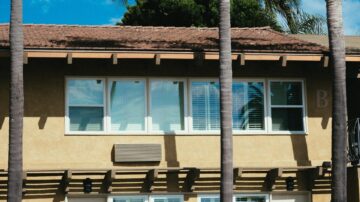
Stucco creates a beautiful finish that brings a Mediterranean look to any home. However, stucco is more than just aesthetically pleasing — it’s known to be hardwearing and stable.
Usually found in the Deep South and other areas of high humidity, stucco must do two things: keep out water and allow the wall to breathe, releasing any water vapor that has been trapped in the exterior wall system.
However, far too often, failures appear in the form of rotten wood on the exterior walls — an issue that could have been prevented if the stucco had been installed correctly. So, how can this costly problem be solved? Let’s start with the basics.
What Is Stucco?
Stucco has been around for centuries. The proper mixture of Portland cement, lime, sand and water provides a durable, long-lasting exterior finish for your home. It can be mixed with paint to produce a solid color or it can be painted after it is installed. When properly maintained, stucco has been known to last for more than 50 years.
Isn’t Stucco Waterproof?
Since stucco is a masonry product, it is often believed to be waterproof already. However, this isn’t totally true — stucco is indeed permeable and will let some water through.
Waterproofing a stucco finish requires a multi-step process that provides high resistance to water intrusion while still allowing water vapor to easily escape.
How To Waterproof Stucco

What Is the Difference Between a Waterproofer and a Water Sealer?
Water sealers do not hold back hydrostatic pressure (PSI); they merely repel water from penetrating the surface of the masonry. In contrast, waterproofing products actually fight against water. Products like DRYLOK Extreme Masonry Waterproofer accomplish this by infiltrating the pores of the wall, and through expansion, actually become part of the wall.
Once dry, a waterproofing product can withstand 7 – 15 PSI of water pressure. To give an idea of what this is like, 10 PSI is equivalent to a 22-foot wall of water being sprayed against your building — pretty powerful. A waterproofer must also have the ability to release water vapor that may get behind the wall surface. Otherwise, mold, mildew and rot will form, and the structure will be compromised.
Sealed Cladding System

Sealed cladding systems have been successfully used for the last 40 years to waterproof stucco and have provided a complication-free service life.
In order to get optimum results, you need to finish the stucco with a sealant that resists water penetration, but still allows any moisture that gets behind the wall to exit in the form of vapor. Using the following system fully protects the stucco from water penetration and eliminates the need for a drainage plane because water cannot infiltrate the surface.
Sealed cladding systems can be used with CMU construction, as well as OSB and glass-faced gypsum backing. Let’s take a look at how each of these is applied:
CMU Construction:
Flush strike all mortar joints.
Apply a ⅜” scratch coat of mortar, roughing up with a scarifier.
Trowel on at least a ⅛” brown coat (both coats should equal a minimum of ½”.
Finish the system with a single coat of DRYLOK Extreme Masonry Waterproofer.
OSB/Wood Sheathing Construction:
Apply a code-approved weather-resistant barrier (WRB) to the sheathing. The sheathing should have an ⅛” gap between adjacent sheets to allow for expansion.
Attach a welded-wire mesh over the WRB with staples or screws.
Trowel a ⅜” scratch coat and a ⅜” brown coat over the lathing (both coats would equal at least ¾”).
Finish the system with two coats of DRYLOK Extreme Masonry Waterproofer waterproofing.
Glass-Faced Gypsum Sheathing Over Steel Studs:
Attach ⅝” glass-faced gypsum to steel studs.
Apply a code-approved weather-resistant barrier (WRB) to the gypsum.
Attach a welded-wire mesh over the WRB with screws.
Trowel a ⅜” scratch coat and a ⅜” brown coat over the lathing (both coats would equal at least ¾”).
Finish the system with two coats of DRYLOK Extreme Masonry Waterproofer.
Finally, some simple preventive measures are needed when waterproofing stucco. If you have followed the above instructions to a tee but haven’t properly flashed all possible openings to the interior of the building, you may still develop leaks. Ensure the following are installed correctly:
Roof-to-wall flashing
Window and door flashing
Wall flashings around penetrations
As a final precaution, make sure all run-off water has been diverted away from the structure.
Drylok Is the First Choice for Professionals

The sealed cladding system is the only code-approved, tested and warranted system for exterior cladding in all climates, including warm, humid areas. DRYLOK Masonry Products come in a tintable white color with a smooth texture that contains a biocide to help prevent mildew growth on the paint.
Introduced in 1953, DRYLOK is recognized by professionals and homeowners as the best solution for waterproofing all masonry construction, including floors, walls and exterior surfaces. Contact us today to find a retailer near you, or go online to get the latest technical data and application guides.


